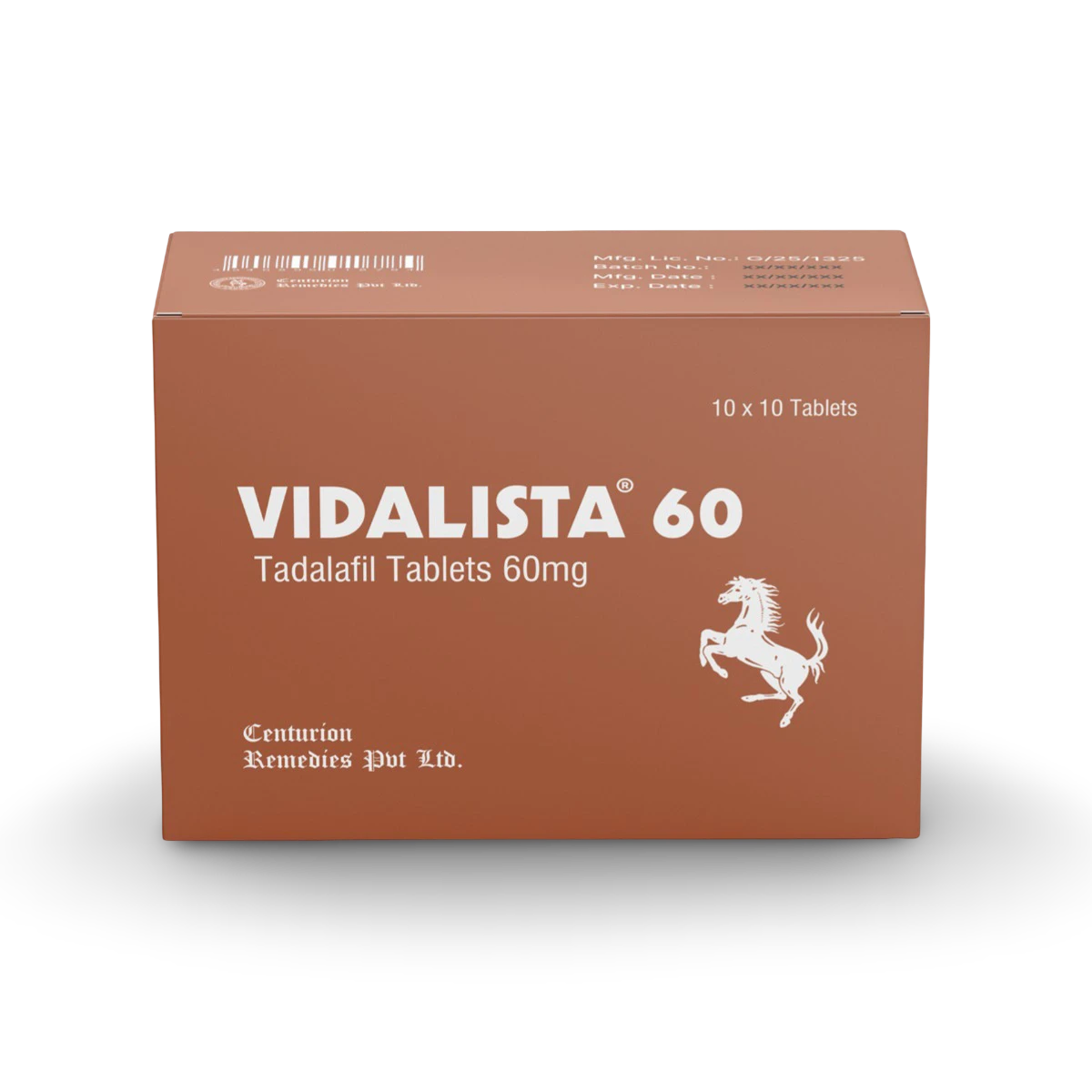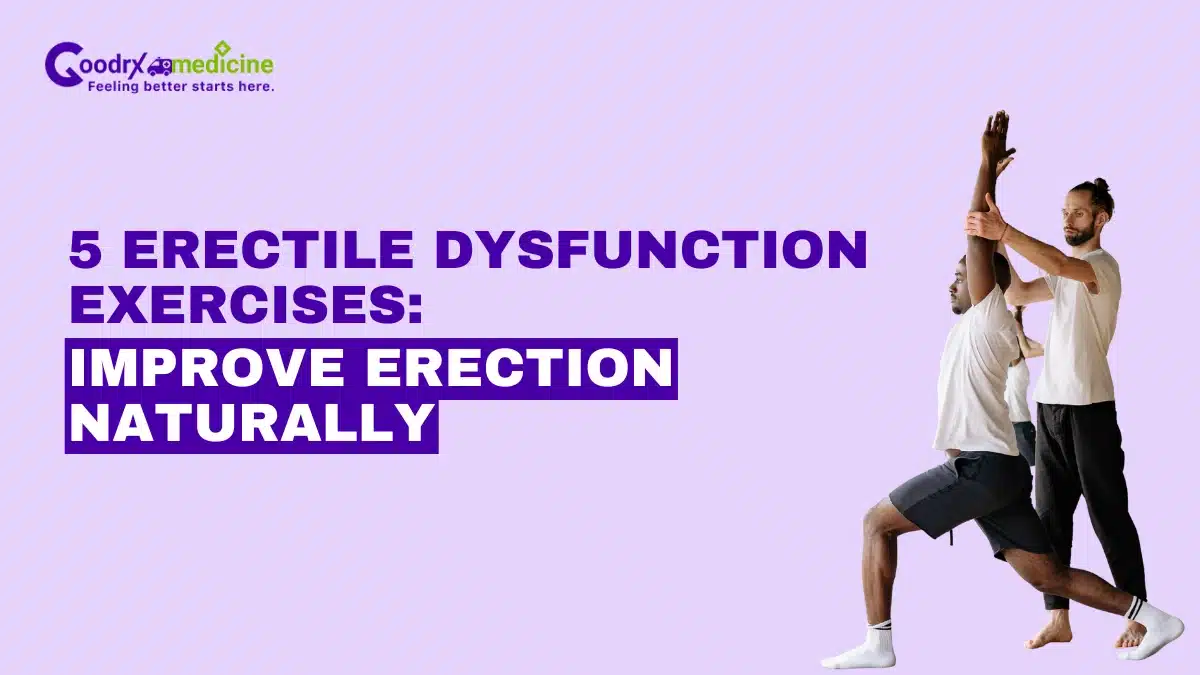Erectile Dysfunction (ED) makes it difficult for a man to get and keep an erection. About 18 million men experience ED or impotence in America, and many feel worried, frustrated, or unsure about where to turn.
But medicines, surgeries, and therapies are not the only treatments for ED or impotence. Men can try out some exciting and rewarding Erectile Dysfunction exercises that support natural improvement.
These exercises, like Kegels, aerobics, and Pilates, are simple, safe, and easy to start at home. They help improve blood flow, strengthen muscles, and boost confidence. Keep reading to learn how these exercises can support your sexual health and overall well-being.
Best Erectile Dysfunction exercises
Certain types of physical activity can strengthen muscles involved in erections and help combat ED naturally. Effective exercises to improve Erectile Dysfunction primarily target the pelvic floor muscles and cardiovascular health.
Save up to 90% on your medicine bills

Cenforce 100 mg

Cenforce 200 mg

Kamagra Oral Jelly Rx 100 mg

Vidalista 60 mg
You can try some of these easy exercises mentioned below:
1.Kegel
You can treat impotence with exercises, such as Kegel, which is one of the pelvic floor exercises. These workouts are meant for the pelvic floor muscles on the lower side. This exercise targets the Pubococcygeus (PC) muscle.
Kegel exercises will undoubtedly strengthen the Pubococcygeus. They are also quite successful in treating Erectile Dysfunction.
Here are different types of Kegel exercises:
- Flat back pelvic exercise: Lie on your back to begin this pelvic floor muscle exercise. Keep your knees relaxed and bent, pointing upward, and your hands on either side. Draw your penile region in and try to get it closer to your abdomen. After five seconds, hold the position for five more. Then, you can relax and resume your original position. Repeat this process three to five times, and you will see the change.
- Sitting on a chair pelvic exercise: Sit upright on a chair and avoid resting your back on it. Squeeze and relax the muscles in the penile region as if you are trying to stop the urine from flowing. Hold this position for three to five seconds in eight sets.
2.Aerobics
According to a study published in the Ethiopian Journal of Health Science in 2011, Aerobic exercise helps manage ED. It is noted that Aerobic exercises help you treat cardiovascular conditions. These exercises show improvement in maintaining a good flow of blood.
Aerobic exercise can help improve Erectile Dysfunction symptoms significantly, often boosting erectile function by 15% or more, depending on how severe the symptoms are at the start.
The American Heart Association recommends 30 minutes of Aerobic exercise, done 5 to 7 times a week, for good cardiovascular health. It has benefits such as helping maintain proper blood pressure, Diabetes, and weight and improving healthy Cholesterol.
Some of the notable Aerobic exercises are as follows:
- Swimming
- Cycling
- Walking
- Rowing
- Jumping
3.Pilates
Pilates help increase pelvic strength. Pelvic curl, Knee fallouts, and Supine curve exercises can help treat ED.
- Pelvic curl exercise: Perform this exercise by lying on your back with bent knees and arms on the sides. Contract and relax the muscles in the pelvic region every time you exhale. Push your back to the floor and raise the pelvis toward the belly button. Gently lift your buttocks and plant your heels firmly on the floor. Squeeze your buttocks while lifting yourself.
- Supine foot raises: Perform the Supine Exercise by lying down straight on the back. Exhale and contract the pelvic floor muscle. While doing this, raise one leg while keeping the pelvis and spine still. Inhale when you bring the leg down. Similarly, repeat this exercise with alternate legs. You can perform this exercise in different sets.
- Knee fallout exercises: Begin this Erectile Dysfunction exercise by lying on your back. Your hands should be flat on the ground, and your knees bent. Now move your knees to the sides as you inhale and exhale. Keep on moving your knees inside and towards the side as you breathe. Continue doing this movement in different sets to see a visible improvement.
4.Yoga
Stress and Anxiety are major ED contributors. Yoga focuses on relaxation, breath control, and mindfulness.
Incorporating Yoga helps reduce stress and Anxiety, promoting better circulation and pelvic muscle engagement through specific postures and breathing exercises.
Helpful poses for ED include:
- Cobra Pose (Bhujangasana): Strengthens pelvic muscles and opens up blood flow.
- Bridge Pose (Setu Bandhasana): Engages glutes and pelvic floor.
- Child’s Pose (Balasana): Relaxes the body and relieves stress.
Aim to practice Yoga for 20 to 30 minutes, 3 to 5 days a week. Combine it with breathing exercises to calm the nervous system.
5.Resistance training
Strength training does more than build muscle; it also boosts Testosterone, which is essential for sexual desire and function. Therefore, resistance training helps with libido.
Typical resistance exercises that help include squats, lunges, deadlifts, push-ups, and resistance band routines focusing on the lower body and core.
Here’s how you can start:
- Train 2 to 3 days a week.
- Focus on large muscle groups (legs, back, chest).
- Use free weights, resistance bands, or your body weight.
- Rest between sessions to avoid overtraining.
Strength training can improve body image, confidence, and sexual satisfaction in men with mild to moderate ED. Avoid going overboard, excessive training without rest can increase cortisol (a stress hormone) and reduce Testosterone.
Practical tips to get started safely
Starting a new exercise routine for ED doesn’t need to be complicated, but safety and consistency matter. Here’s how to begin without risking injury or overexertion:
- Get medical clearance: Check with your doctor first, especially if you have heart problems, Diabetes, or haven’t exercised in a while.
- Start small: Begin with simple Kegels, light resistance moves, or 5 to 10 minutes of activity, increasing gradually.
- Prioritize form: Use correct technique, especially for pelvic floor exercises, to avoid strain or targeting the wrong muscles.
- Stay consistent: Regular, moderate sessions work better than occasional intense workouts.
- Listen to your body: Mild fatigue is fine; stop if you feel sharp pain.
- Support with healthy habits: Good sleep, balanced nutrition, and stress control can enhance your results.
Conclusion
Erectile Dysfunction exercises offer a natural, effective way to strengthen pelvic floor muscles, improve circulation, boost Testosterone, reduce stress, and enhance overall sexual function. Techniques such as Kegels, Pilates, Yoga, aerobic workouts, and resistance training target different aspects of sexual health, from muscle endurance to hormone balance.
Practicing them consistently, alongside healthy lifestyle habits, can help many men regain confidence and performance. Starting safely with medical clearance, gradual progression, proper form, and consistency maximizes benefits while minimizing risks. Consistency is one of the main reasons why these natural approaches can help men manage ED effectively and improve overall well-being.
However, ED can also indicate underlying health problems like cardiovascular disease, Diabetes, Low Testosterone, prostate issues, or neurological disorders. If symptoms persist despite regular exercise, consult a healthcare provider.

Frequently Asked Questions
Do I need special equipment for these exercises?
No. You do not need special equipment for Erectile Dysfunction exercises. Most of them can be done at home or anywhere. Simple moves like Kegels, walking, and stretching use only your body, making them easy, safe, and cost-free.
Can ED exercises cure ED?
No. Erectile Dysfunction exercises cannot fully cure ED for every person. They can make erections stronger and improve blood flow. You may still need medicine or other treatments if ED is caused by a health problem that exercise cannot fix.
Are there risks or precautions to consider when doing pelvic exercises for ED?
Yes, pelvic exercises for ED come with risks. Avoid overdoing Kegel exercises or holding your breath, as this can worsen symptoms. Ensure you relax your muscles after contractions and take breaks. If you experience pain or breathing issues, stop and consult a doctor.
Can I do Erectile Dysfunction exercises if I’m taking medication like Sildenafil?
Yes, you can do Erectile Dysfunction exercises if you are taking medication like Sildenafil. Exercise and medication often work well together to improve blood flow and erections. However, talking with your doctor before starting any new exercise routine is best for being safe and getting personalized advice.
How long does it typically take to see results from Kegel exercises?
If you do Kegel exercises regularly and correctly, you can start seeing results in about 4 to 6 weeks. Most individuals notice stronger pelvic muscles and better control within 6 to 8 weeks. Keeping a consistent routine for at least 2 to 3 months leads to lasting improvements.
When referencing outside resources, GoodrxMedicine always provides full citations. To learn more about the measures we use to maintain the quality of our content, please review our Content Information Policy.









